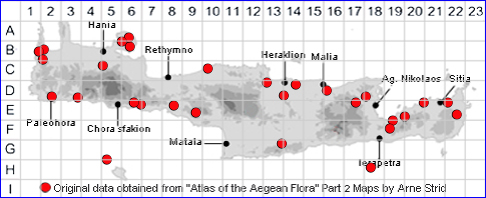
NARCISSUS OBSOLETUS
Family:- AMARYLLIDACEAE/Sect. SEROTINI
Common Names:- Autumn narcissus
Synonyms:- Hermione obsoleta, Narcissus autumnalis subsp. obsoletus,
Narcissus elegans var. obsoletus, Narcissus serotinus var. obsoletus.
Meaning:- Narcissus (Gr) After a youth in Greek mythology.
Obsoletus (L) Rudimentary, decayed, worn out.
General description:- Bulbous, flowering in autumn.perennials, with basal leaves.
Stems:-
a) 7-20(-30) mm.
b) hollow, leafless.
c) carrying one or several flowers.
Bulb:-
a) 5-25 x 12-20 mm.
Leaves:-
a) 10-20 cm x 1 mm.
b) cylindrical.
c) covered somewhat with a waxy bloom (glaucous),
d) 1-2, on non-flowering bulbs, usually absent from a bulb which has flowered.
Flowers:-
a) solitary, or occasionally paired.
b) erect.
c) fragrant.
1) Spathe:
a) 15-35 mm.
b) thin and transparent (hyaline), tubular in lower half.
2) Hypanthial tube:
a) 12-20 mm.
3) Perianth-segments:
a) 10-16 x 3-7 mm.
b) oblong-lance-shaped, spreading (patent).
c) white.
4) Corona:
a) 1-1·5 x 3-4 mm.
b) 6-lobed.
c) orange.
Fruit:-
1) Capsule:
a) 10mm long and 4-5 mm diam.
b) with 3 valves.
c) green.
Key features:-
1) Leaves c. 1 mm wide, not present during the time when the flower is fully open
(anthesis).
2) Flowers solitary or in umbels of 2-3.
Habitat:- Dry open shrubby vegetation, open pinewoods, rocky limestone flats,
mainly around coastal areas. 0-400(700) m.
Distribution:- Scattered in S Greece. - Mediterranean region. Scattered distribution
mainly around the coastal regions of Crete.
Flowering time:- Oct-Dec.
Photos by:- Steve Lenton
SPECIES DESCRIPTION
